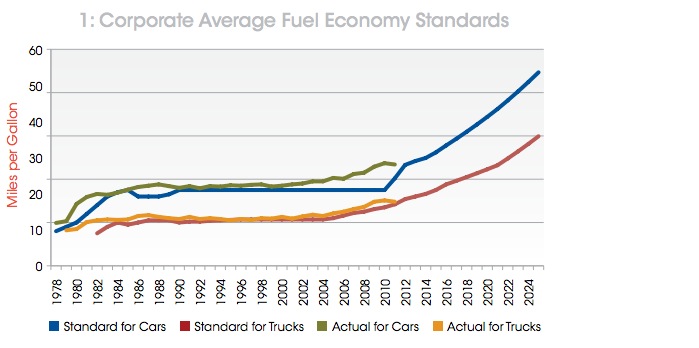NATIONAL ASSOCIATION FOR CONVENIENCE AND FUEL RETAILING
In December 2013, the U .S. Energy Information Administration (EIA) released the early publication of its Annual Energy Outlook 2014 (AEO2014), providing projections for the energy markets through 2040 . NACS used EIA’s report to prepare the following analysis.
“Future of Fuels 2014” seeks to determine how EIA’s projections will directly affect the retail fuels market, consumer use of specific types of light duty vehicles, and the pace at which alternative fuels may gain market share.
From this analysis, NACS discovered the following:
- The vehicle miles traveled by light duty vehicles (LDV) is projected to increase nearly 29% by 2040 . This is lower than last year’s forecast of nearly 40% based on EIA’s revised method for calculating miles traveled and adjustments made to the demographics and behavior of the driving population.
- The amount of energy required for a LDV to travel one mile is projected to decline approximately 42% by 2040 . The vehicles projected to be leaders in increased efficiency will be those powered by gasoline, natural gas and propane — each of which is projected to reduce energy consumption per mile by more than 40%.
- Liquid fuels (consisting of gasoline, diesel fuel and E85) will remain the dominant energy source for transportation, losing only 0 .40% share of LDV energy consumption to 99 .28% in 2040.
- Gasoline gallons consumed will decline by 24%, while diesel fuel gallons will increase 26% and E85 will expand more than 2,200% . Consequently, gasoline’s share of the liquid fuels market is forecast to drop from 71 .56% to 59 .12%, while diesel will expand from 28 .36% to 38 .84% and E85 will increase from 0 .08% to 2 .04%.
- In the vehicle market, the share dominated by gasoline powered vehicles will drop 14% to 79 .92%; market share will increase for diesel powered and flexible fuel vehicles (capable of running on gasoline and E85), reaching 4 .07% and 10 .70%, respectively.
- In the vehicle market, the share dominated by gasoline powered vehicles will drop 14% to 79 .92%; market share will increase for diesel powered and flexible fuel vehicles (capable of running on gasoline and E85), reaching 4 .07% and 10 .70%, respectively.
- Non-liquid fuel alternatives (natural gas, propane, electricity and hydrogen) will increase their total contribution to the light duty vehicle energy consumption by 125%, but still only contribute 0 .72% of the energy consumed by 2040.
- Electricity is projected to experience the strongest growth in the non-liquid market, increasing its share of non-liquid LDV energy from 2 .45% to 38 .47%.
- Hybrid vehicles are forecast to capture the greatest share of the LDV market, growing from 1 .1% to 4 .4%; plug-in hybrids follow with a 2040 market share of 0 .95% and battery electric vehicles capture 0 .42% . Natural gas, propane and hydrogen vehicles combine to capture 0 .51% of the market.
- On an energy equivalent basis, E85 is reported as the most expensive fuel in 2012, followed by gasoline and diesel fuel . By 2040, there is one change in the three most expensive fuels — diesel becomes the second most expensive behind E85 and above gasoline . Electricity and natural gas are the least expensive fuel choices throughout the forecast.
Download full version (PDF): Future of Fuels 2014
About the National Association for Convenience and Fuel Retailing
www.nacsonline.com
“NACS serves the convenience and fuel retailing industry by providing industry knowledge, connections and advocacy to ensure the competitive viability of its members’ businesses. In 2007, the association shortened its name to NACS and added a tagline that better defines its presence both internationally and at the retail fueling level: The Association for Convenience and Petroleum Retailing. In 2010, this statement was further enhanced to The Association for Convenience and Fuel Retailing.”
Tags: Fuel, Gas, NACS, National Association for Convenience and Fuel Retailing, Petroleum







 RSS Feed
RSS Feed